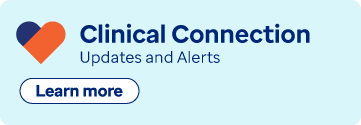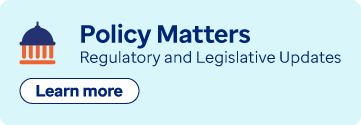Subscribe today to receive notice of our latest thought leadership, articles, blogs and updates.

Through our partnership with Risk & Insurance magazine and other media opportunities, we have written the following informative article.
PBM 101: A REFRESHER ON THE ROLE OF PHARMACY MANAGEMENT IN WORKERS’ COMPENSATION
Interview with David Young, President and CEO of Optum Workers’ Compensation and Auto No-fault
The pharmaceutical industry has been making regular appearances in the news cycle recently. Coverage of America’s opioid epidemic and ongoing discussion around drug price transparency have kept prescription medication a headline topic. Pharmacy benefit managers (PBMs) are central to that conversation. They have a valuable role to play in managing both drug cost and patient safety — especially in workers’ comp. Increasingly, PBMs are relying on massive stores of data to identify broader patterns that inform individual prescription decisions. According to David Young, President and CEO of Optum Workers’ Compensation and Auto No-fault, this is a PBM’s true value proposition.
We sat down with David to discuss the core functions of a PBM, what makes workers’ comp unique, and how organizations should really be leveraging their PBM:
R&I: Let’s start with the basics, what is the function of a PBM?
David Young: A PBM administers the medication benefit for companies or health plans on the group health side, or in the case of workers’ comp, for the carrier, self-insured company or their TPA. The primary purpose is to reduce the medication cost and maximize health outcomes.
The primary functions of a PBM boil down to four buckets.
The first is the claims processing, which is the processing and payment of prescription medications. The second component is managing the network of pharmacies. That can include home delivery and specialty pharmacies along with traditional retail pharmacies. The third leg of that is developing and managing the formularies and putting together clinical programs around quality and utilization. And then lastly the PBM negotiates medication prices directly with drug manufacturers.
The PBM is really thought of as the hub of the prescription benefit. We’re taking care of all the key stakeholders in the value chain — the injured worker, the health plan or the policy holder, the pharmacies, and the pharmaceutical manufacturers.
R&I: What are the key differences between a workers’ comp PBM and a PBM in the group health environment?
DY: What makes the comp world unique is it’s managed at the state level, and there’s a significant amount of legislative activity around PBMs, formularies, and opioid management.
There are more than 1,200 bills related to workers’ comp that are up for discussion in various states. Obviously not all of those will be adopted. but the regulatory component of a PBM is extremely important and we stay very close to that to ensure we’re providing our customers an up-to-date, compliant program.
I think sometimes the customer base forgets that aspect of it; the complexity of managing at 50 different state levels.
Another complexity is that we don’t get into plan benefit design, which is what a traditional PBM would do. Their services are rendered under a ‘per member per month’ payment model. We don’t do that because we don’t have members, we have injured workers, and we never know how many of them there will be at any given time.
So where a group health PBM would apply actuarial analysis to price a program, we’re more driven by the regulations. We price by what the state says is allowable.
When you look at opioids, for example, a number of state workers’ comp programs have dictated that you can only dispense three days’ worth of pills at a time, and then you need a follow-up prescription. Group plans aren’t subject to the same rules, and don’t necessarily approach the opioid issue in the same fashion.
R&I: PBMs do a have a large role to play in managing the opioid crisis within the workers’ comp world. How else to PBMs provide value in workers’ comp?
DY: The real value of a PBM is its ability to produce better medical outcomes for injured workers by carefully vetting drugs for safety and efficacy, and delivering them at a fair price. A PBM’s drug utilization and clinical programs are what really deliver the value.
At Optum, for example, we have a committee of independent practicing physicians, nurses, and clinicians that come together on a quarterly basis to vet every medication, not based on cost, but based upon its efficacy against the disease state that is being attacked.
And obviously cost comes into play. If you have two drugs that are equally as effective on a disease state, you want to drive to the lower-cost alternative.
But I think it’s important to note that cost is not the first driver in a good PBM program. It’s really driven towards medical outcomes, and ensuring that the individual gets back to maximum medical capacity as quickly as possible.
R&I: Does every PBM take this approach, where quality is a priority over cost? How should organizations utilize their PBM to take advantage of these benefits?
DY: There are organizations that use their PBM as simply a transaction processor, but they are leaving a lot of value on the table. Drug utilization and network management services are something any traditional PBM would offer.
What organizations should really look for, however, are PBMs that are taking these services to the next level by looking to aggregated data for deeper insights. This means pulling together data from separate programs and looking outside of workers’ comp to examine broader trends in prescribing patterns. When you have that data, you can behave more proactively, flagging those prescribers that are outliers and letting your constituents know to proceed with caution.
Health care tends to be very fragmented, but aggregated data lets you pull the pieces of the puzzle together and make a complete picture. You can rise above the transaction-level and see a patient as a whole.
R&I: So technology is playing a larger role in the services that PBMs offer?
DY: Yes. We are leveraging the power of data analytics and artificial intelligence to drive to a much better clinical result.
Opioid management provides a good example. By amassing and bringing disparate data sets together, we can see things like an individual patient’s daily morphine equivalent dosage (MED), how many prescribing providers are treating a given injury, and whether they are communicating with each other. When we spot red flags like a consistently high MED, we can recommend other utilization tools, a weaning schedule, or drug adherence protocols.
There’s a push in the marketplace towards electronic medical records and singular holding place for a lot of this data, but until that exists, we can serve as that central portal for adjusters. We can bring a level of transparency that has not existed in the past.
Technology also plays a huge role in educating adjusters. These days, adjusters are trying to handle anywhere from 300 to 600 cases at a time. Presenting information to them that is actionable and synthesizing the data into something that they can react to — that’s an extremely important part of what we provide to the marketplace.
R&I: How does consolidation among health systems, pharmacies and health plans impact PBMs?
DY: The pace of consolidation within the healthcare system over the past decade is unlike anything I’ve ever seen, but this is great for us because all of their data is then aggregated on a common platform. We can then integrate with that data and gain a holistic picture of each patient.
Previously the approach was so fragmented… we’d have to chase down doctor’s notes and records from 10, 15 or 20 different systems. From a technology perspective, consolidation creates transparency both for the health systems and for PBMs.
From an operational perspective as well, consolidation also streamlines our process. Everybody has a customer portal or workflow engine, and one of the challenges for our customer base is managing all of those platforms across the myriad managed care organizations. Consolidation reduces that pain point by creating fewer parties to interact with.
And of course, being part of a larger health system affords us greater negotiating power with pharmacy network and drug manufacturers.
Source:
The article is from the Risk & Insurance website and can be found at https://riskandinsurance.com/role-of-pharmacy-management-in-workers-comp/ Author: Katie Dwyer March 8, 2019

Recent Articles



